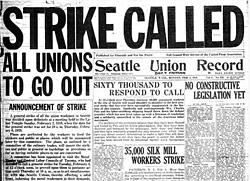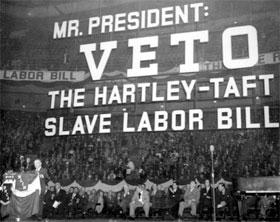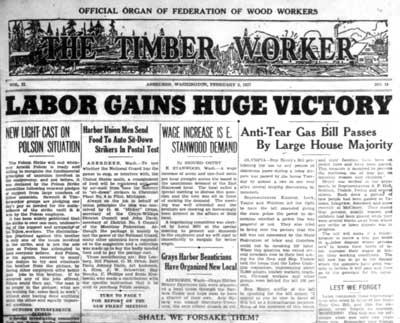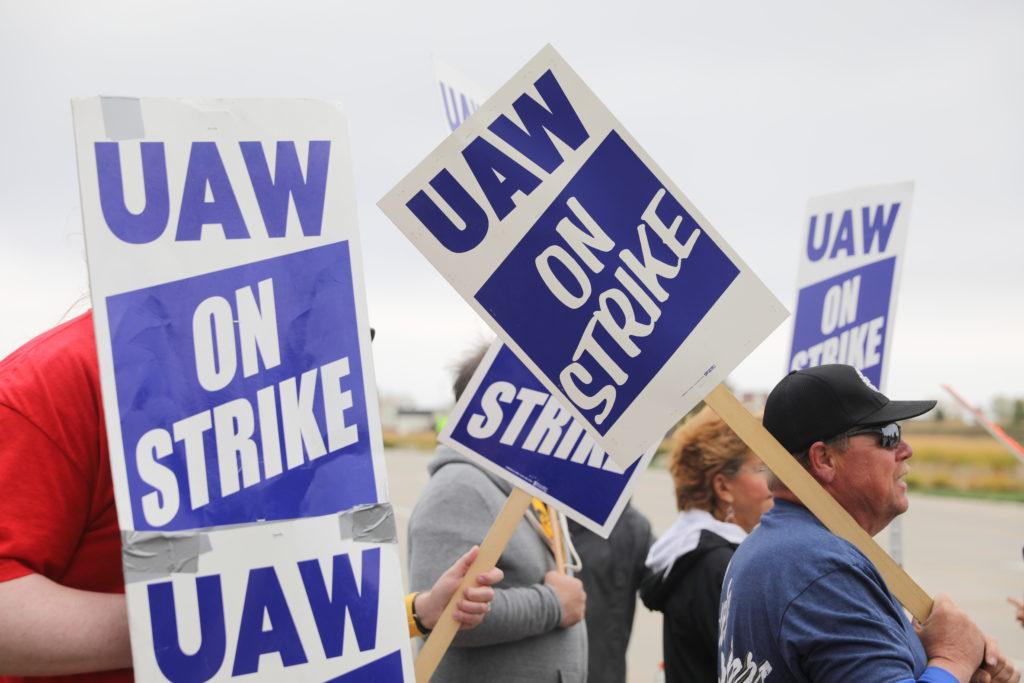In recent years, the resurgence of labor strikes has captured headlines and reignited debates about workers’ rights and corporate accountability. As tensions between employees and employers escalate in various industries, labor unions are stepping into the spotlight once again-this time advocating for new strike legislation. But why are these organizations, long seen as the champions of the working class, rallying behind fresh laws that could reshape the very nature of industrial action? This article delves into the motivations driving labor unions to support new strike legislation, exploring the complex interplay between legal frameworks, economic pressures, and the evolving landscape of labor relations.
Table of Contents
- The Changing Landscape of Worker Rights and Union Influence
- Key Provisions in the New Strike Legislation Unions Support
- How the Legislation Addresses Previous Legal Barriers to Striking
- The Potential Impact on Employer-Employee Negotiations
- Strategic Recommendations for Unions Navigating the New Legal Framework
- Frequently Asked Questions
- Final Thoughts
The Changing Landscape of Worker Rights and Union Influence
Over recent years, the dynamics between workers, employers, and legislative bodies have undergone a notable transformation. The resurgence of labor unions as powerful advocates for employees’ rights is a response to evolving workplace challenges, including gig economy proliferation, automation, and shifting labor market demands. These changes have reignited union efforts to influence policy, making them key players in shaping new strike legislation designed to safeguard workers’ voices.
At the heart of this movement is a desire to balance the scales between corporate interests and employee welfare. Unions are pushing for laws that not only protect the right to strike but also address contemporary concerns such as unfair labor practices and employer retaliation. By advocating for clearer legal frameworks, unions aim to create an environment where striking is a viable and protected form of protest, ensuring workers can negotiate for better conditions without fear of punitive consequences.
- Enhanced legal protections for striking workers against dismissal and blacklisting.
- Recognition of digital organizing methods as legitimate union activity.
- Stricter penalties for employers violating labor laws during labor disputes.
- Support for collective bargaining in emerging industries and non-traditional workplaces.
| Aspect | Traditional Legislation | New Strike Legislation |
|---|---|---|
| Worker Protection | Basic safeguards | Expanded and explicit rights |
| Employer Penalties | Limited enforcement | Increased fines and sanctions |
| Organizing Methods | Primarily in-person | Includes digital platforms |
| Scope | Industrial sectors | Gig and tech economy included |

Key Provisions in the New Strike Legislation Unions Support
The fresh wave of strike legislation has been crafted with several pivotal elements that labor unions argue will level the playing field and enhance workers’ bargaining power. At its core, the legislation introduces provisions that protect workers from unfair retaliation, ensuring that exercising the right to strike does not lead to unjust job losses or punitive actions. This legal shield is a game-changer in industries historically marked by aggressive anti-union tactics.
Another critical facet is the streamlining of the strike authorization process. Unions now benefit from a more straightforward, democratic voting system that empowers members to decide swiftly and confidently. This provision not only expedites the ability to call a strike but also strengthens collective solidarity by reinforcing transparent decision-making.
The legislation also mandates employers to engage in good faith negotiations with unions before and during strikes. This requirement encourages dialogue and reduces the likelihood of prolonged work stoppages, fostering a more balanced negotiation environment. Additionally, the law includes measures to safeguard essential services, ensuring strikes do not cripple critical infrastructure while still respecting workers’ rights.
- Protection against retaliation: Job security during strikes
- Simplified strike voting: Faster, more inclusive member decisions
- Mandatory good faith bargaining: Encourages constructive employer-union talks
- Essential services safeguards: Balances public interest and labor rights
| Provision | Union Benefit | Employer Expectation |
|---|---|---|
| Retaliation Protection | Job security & confidence | Respect worker rights |
| Strike Voting Reform | Rapid, democratic decisions | Clear strike signals |
| Good Faith Bargaining | Fair negotiation platform | Engage sincerely |
| Essential Services Clause | Maintain public safety | Plan contingencies |

How the Legislation Addresses Previous Legal Barriers to Striking
For decades, labor unions faced stringent legal obstacles that undermined their ability to strike effectively. Previous statutes imposed narrow definitions on what constituted a legal strike, often penalizing workers for sympathetic or secondary actions. The new legislation decisively removes these barriers by expanding the scope of lawful strike activities, empowering unions to negotiate on more equal footing with employers.
One of the most transformative changes is the revision of the “no-strike” clauses embedded in many labor contracts. These clauses historically limited workers’ leverage by restricting strike actions during contract terms. The updated law introduces provisions that allow for targeted strike options without automatically breaching contracts, giving unions more strategic flexibility.
Additional key reforms include:
- Protection for workers engaging in peaceful picketing and informational protests
- Elimination of mandatory cooling-off periods before strike initiation
- Safeguards against the use of permanent replacement workers during strikes
| Previous Barrier | New Legislative Change | Impact on Unions |
|---|---|---|
| Strict “no-strike” clauses | Contract flexibility for strike actions | Increased negotiation power |
| Mandatory cooling-off periods | Optional cooling-off periods | Faster strike mobilization |
| Legal penalties for secondary strikes | Legal protection for solidarity strikes | Broader collective action |
By addressing these entrenched legal hurdles, the legislation not only revitalizes the right to strike but also fosters a more balanced labor-management relationship. Unions now have clearer pathways to assert their demands without fear of disproportionate legal retaliation, marking a significant step forward in labor rights advocacy.
The Potential Impact on Employer-Employee Negotiations
Introducing new strike legislation could significantly recalibrate the dynamics between employers and employees. By redefining the legal framework for collective action, the balance of power during negotiations might shift, encouraging more equitable dialogue. Employers may find themselves compelled to engage more proactively, fostering an environment where mutual respect and understanding become prerequisites rather than afterthoughts.
For employees and labor unions, enhanced protections and clearer guidelines empower members to negotiate with greater confidence. This can lead to:
- More strategic bargaining approaches
- Increased willingness to advocate for fair wages and benefits
- Reduced fear of retaliatory measures from employers
However, these shifts also present challenges. Employers may need to invest in advanced conflict resolution and communication training, anticipating that negotiations become more robust and less predictable. The legislation could also prompt a reevaluation of internal policies to ensure compliance and to maintain operational continuity during potential labor actions.
| Impact Area | Potential Outcome |
|---|---|
| Negotiation Leverage | More balanced power distribution |
| Communication | Enhanced transparency and trust |
| Workplace Stability | Short-term disruptions, long-term gains |

Strategic Recommendations for Unions Navigating the New Legal Framework
Adapting to evolving strike legislation demands a proactive and nuanced approach. Unions must prioritize building strong communication channels with their members, ensuring everyone understands both the new rights and restrictions. This transparency fosters unity and minimizes internal confusion during critical moments of collective action.
Equally important is the investment in legal education and training. By arming union leaders with up-to-date knowledge on compliance and negotiation tactics, organizations can navigate the legal landscape more confidently. Workshops, webinars, and accessible resource hubs tailored to the new framework can empower representatives to act decisively and within the bounds of the law.
- Collaborative negotiation should be emphasized over confrontation, leveraging the legislation’s potential to encourage dialogue.
- Data-driven advocacy can bolster bargaining positions by highlighting worker impact with concrete evidence.
- Building alliances with community groups and other unions can amplify influence and public support.
| Strategic Focus | Benefits | Implementation Tips |
|---|---|---|
| Member Education | Increased engagement and compliance | Regular updates, FAQ sessions |
| Legal Training | Minimized risk of violations | Partner with legal experts |
| Collaborative Negotiations | Better long-term agreements | Facilitate mediated discussions |
| Alliance Building | Broader support network | Joint campaigns and events |
Frequently Asked Questions
Q&A: Why Labor Unions Are Backing New Strike Legislation
Q: What is the new strike legislation about?
A: The new strike legislation aims to update labor laws, making it easier for workers to organize strikes, protect their rights during industrial actions, and ensure fair negotiation processes between employers and unions. It often includes provisions for quicker dispute resolutions and stronger penalties for companies that retaliate against striking employees.
Q: Why are labor unions supporting this legislation?
A: Labor unions see the legislation as a crucial step toward restoring workers’ power in an increasingly challenging economic landscape. They believe it will provide them with better tools to advocate for fair wages, safer working conditions, and job security, all while protecting members from unfair employer practices during strikes.
Q: How does this legislation change the current strike rules?
A: Compared to existing laws, the new legislation typically reduces bureaucratic hurdles that previously delayed or weakened strike actions. It might also expand legal protections for striking workers, such as safeguarding their jobs and benefits, and facilitating more transparent collective bargaining processes.
Q: Are there concerns about the impact of the new law?
A: Yes, some critics argue that the legislation could lead to more frequent strikes, potentially disrupting businesses and the economy. Employers worry about increased costs and operational challenges. However, unions counter that empowering workers ultimately leads to healthier workplaces and stronger economies.
Q: What historical context is influencing this push for new strike laws?
A: Over recent decades, many labor laws have tightened, limiting unions’ abilities to strike effectively. Coupled with rising income inequality and workplace grievances, unions are rallying to regain ground lost through deregulation and anti-union policies, seeking legislation that reflects today’s labor realities.
Q: How might this legislation affect workers beyond union members?
A: By strengthening strike protections and collective bargaining, the legislation could set new standards for labor rights that benefit all workers. It may encourage more inclusive workplace policies and inspire greater solidarity across industries, potentially improving conditions even where unions aren’t present.
Q: What role do public opinion and politics play in this debate?
A: Public opinion is often divided-some sympathize with workers’ struggles, while others prioritize economic stability and business interests. Politically, the legislation becomes a battleground between parties advocating for labor rights and those emphasizing market freedoms, reflecting broader societal values about fairness and economic growth.
Q: What’s next for the legislation and labor unions?
A: Unions will likely continue lobbying and campaigning to ensure the legislation passes and is effectively implemented. Meanwhile, employers and lawmakers may seek compromises or amendments. The coming months will be critical in determining how this legislation reshapes the future of strikes and labor relations.
Final Thoughts
As the landscape of work continues to evolve, labor unions find themselves at a pivotal crossroads-balancing the power of collective action with the realities of modern legislation. Their support for new strike laws signals more than just a strategic move; it reflects a deeper commitment to safeguarding workers’ voices in an era of shifting economic tides. Whether these laws will redefine the future of labor relations or spark fresh debates remains to be seen, but one thing is clear: the conversation around workers’ rights is far from over, and unions are determined to keep it alive.

